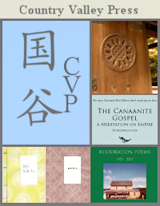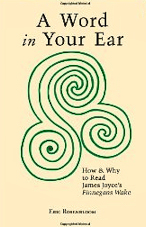
|
|
Spring 2014, Web Issue 16
A multidisciplinary
journal in the
arts and politics

Paintings & Prints
Poetry & Prose
Virtual Facsimiles
Founding Editors:
Joe Brennan
Carlo Parcelli
Contributing Editors:
Bradford Haas
Rosalie Gancie
Cathy Muse
Mark Scroggins
Jim Angelo
Web Editors:
JR Foley
Rosalie Gancie
Nicole Foley
-
From Syllogism Part II:
32.1 The whole business of consciousness is ‘projection’.
From Syllogism Part III
69.1 Taking into account that the input mechanism is constituted of the very limited species and its reliance on finite variables that has brought the planet to the brink of ruin furthered by the established fact that the particular epistemology most responsible has no coherent response to the problem and in most cases cannot even hear it, I think it's fair for this correspondent to claim that the entire western mathematical scientific enterprise can best be described as “Garbage in. Garbage out.”
– Carlo Parcelliselections from:
Syllogism, Parts II and III
All essays, poetry, fiction, and artwork are copyrighted in the
names of the authors and artists,
to whom all rights revert.
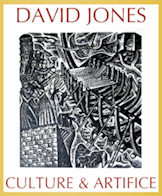
David Jones Conference
March 29 & 30, 2012
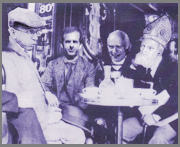
J.R. Foley
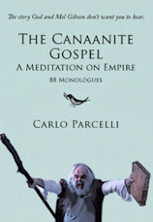
Carlo Parcelli:
Book / Author page

Wayne Pounds
Book / Author page

Unicorn by David Hickman
intro
____________________

|
Robert Coover an excerpt from his new novel
The Brunist Day of Wrath
plus: a review by JR Foley
|
|
JR Foley
GUNS IN THE FIELD Prologue to
Victory Garden Boys:
|

|

|
John Matthias
Sixth Story
from:
|
|
Wayne Pounds
I, Joe:
from:
|

|

|
Magus Magnus
The Free Spirit Proposition |
|
John Armstrong
The View and the Point |

|

|
Cris Mazza
Something Wrong With Her
an excerpt
|
|
Jose Luis Moctezuma
"Negotiations with the Infinite": David Gascoyne's Surrealist Mode |

|

David Gascoyne & British Surrealism A Few Images & Resources |
||

|
Notes on
Bettina Shaw-Lawrence |
|
Jon Woodson
Maxwell Perkins and the Oragean Modernist Literary "Network": Esoteric communication in the modernist comic-satiric novel |

|

|
Norma Procopiow
The Poetics of Riddle
in W.S.Merwin’s Poetry
|
|
LANCE OLSEN
[[ there. ]] a memoir
|

|

|
Robert Hampson
Olson, Fisher, Olsen |
|
Melvin B. Tolson
Rare 1965 Audio
October 18, 1965
Coolidge Auditorium
|

|

|
Alan Tucker
Thirty Flowers |
|
David Hickman
Eight Poems and
|

|
|
Mark Scroggins
Stanzas from a Work in Progress and: |

|

|
Susan Howe's Hauntologies
|
|
Carlo Parcelli
two stories |

|
|
plus:
|
||||

|
Syllogism 2 :
or the Mathematical Sciences and Quantophrenia: Is the internal combustion engine an example of ‘bad science’?
and
Quantophrenia |
|||
|
Joan McCracken
SQUARE the CIRCLE Continuing the tale begun in As Kingfishers Catch Fire and SENT |

|
In this issue...
17 —
FlashPøint: A Multidisciplinary Journal of the Arts and Politics
has been on-line for 17 years. There might be older literary e-zines (itself now a very dated e-word); but 17 years (18 years counting our original — one & only — print publication) is a lot longer than the lives of many of the early 20th Century “little magazines” (BLAST, Broom, et al.) that introduced and promoted the Modernism FlashPøint seeks — modestly or otherwise — to advance.
Many poets, novelists, essayists, and artists have made FlashPøint what it has become — and many of them join this celebration of FlashPøint.
The writer featured in the most recent FlashPøint #15, Robert Coover, leads the celebration with an excerpt from his just-published magnum opus, The Brunist Day of Wrath. A sequel after nearly 50 years to his prize-winning first novel, The Origin of the Brunists, The Brunist Day of Wrath sweeps dozens of characters to the apocalyptic climax of this once-and-future tale of religion in America.
We are extremely pleased to be able to present a rare 1965 audio recording of the American Modernist Poet
Melvin B. Tolson reading at the Library of Congress.
Over the years FlashPøint has featured Cris Mazza and Lance Olsen. This time they share pieces of memoir (Mazza from Something Wrong With Her and Olsen from [[ there ]]) from most unusual angles.
In "Negotiations with the Infinite: David Gascoyne’s Surrealist Mode," new contributor José-Luis Moctezuma introduces us to the surprising if short-lived British surrealist movement. We supplement his essay with a page of images and resources,
David Gascoyne & British Surrealism. Some of the images are iconic souvenirs of the London Surrealist Exhibition of 1936, others are more specifically related to Gascoyne's contributions to Surrealist writing and his own work.
In our attempt to expand the presence of women artists on the net, we decided to assemble what we could of internet sources on the artist
Bettina Shaw-Lawrence, a close friend of David Gascoyne's and whose
pen & ink drawing sits at the top of the essay on Gascoyne's "Surrealist Mode". The sources were few, but we attempted to centralize them as well as we could, and to supply a few new notes & items that were not previously easily available.
Not surrealist but spectral and musical is the poetry Mark Scroggins — poet, scholar, and FlashPøint Contributing Editor — discusses in "Susan Howe’s Hauntologies". The latest of his own poetry can be found in "Stanzas from a Work in Progress."
Alan Tucker gives us "Thirty Flowers", a "hortus conclusus where words create a place in the mind, and language becomes a refuge for the intellect to delight in".
In "High-Energy Construct: Olson, Fisher, Olsen" Robert Hampson takes Charles Olson's manifesto and follows it through Allen Fisher's Place and its current manifestations in the work of the contemporary poet Redell Olsen.
The late scholar Norma Procopiow focuses on W.S. Merwin's use of the riddle as prosodic and philosophical trope in
"The Poetics of Riddle in W.S.Merwin’s Poetry" and urges reconsideration of him as "more than a descendant of the Transcendentalists or model for the 'Beats' ".
Prof. Jon Woodson, who made two explorations of Melvin B. Tolson’s poetry in FlashPøint #14, returns with fresh evidence of the esoteric networkings of certain best-selling authors of the 1920’s-1930’s in "Maxwell Perkins and the Oragean Modernist Literary ‘Network’: esoteric communications in the modernist comic-satiric novel."
In
"Sixth Story", John Matthias offers the conclusion of a book called "Different Kinds of Music": A Few Things About Timothy Westmont. This short story pulls together themes from the first five stories in the book, all of which are about the title character, and the sequence of interchapters, which are about the "different kinds of music" that Westmont listens to at different times in his life.
In
"I, Joe: Confessions of a Confidence Man", Wayne Pounds reveals a recently unearthed manuscript which tells the "true" tale of Joseph Smith and the founding of the Mormon Church.
Magus Magnus, in his piece "The Free Spirit Proposition" considers in its recurrent historical manifestation the possibility of radical liberation from societal constraint.
John Armstrong, in
"The View and The Point", attempts the Herculean task of rectifying "the currently parlous state of poetry", which he bemoans as having "too much view and too little point".
Besides David Hickman's brilliant Collages that appear throughout the issue, he has given us eight new
Poems.
A used bookseller is little more than a beast of burden for other people's words. Carlo Parcelli gives us two stories about his experiences as such a beast: Stormin' Norman' and
Urban Development
Also, he provides the Second and
Third part of his book length work Syllogism/Quantophrenia which clearly delineates the western epistemology of mathematical reason as the reason we live in the end times.
Joan McCracken, with "Square the Circle," adds a short, sharp chapter to her unfolding novel, earlier parts of which have appeared in several FlashPøints.
JR Foley takes us down something more than memory lane with "Guns in the Field", the prologue to Victory Garden Boys: Growing Up in a Suburb of the Cold War."
We are eager to hear from you, especially about this issue, so please tell us what you think: flashpnt@hotmail.com!


